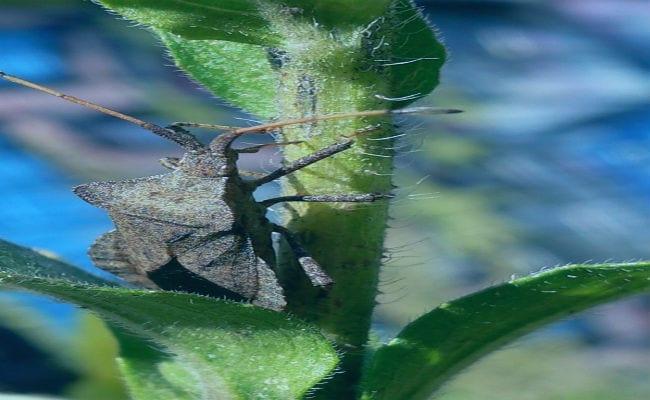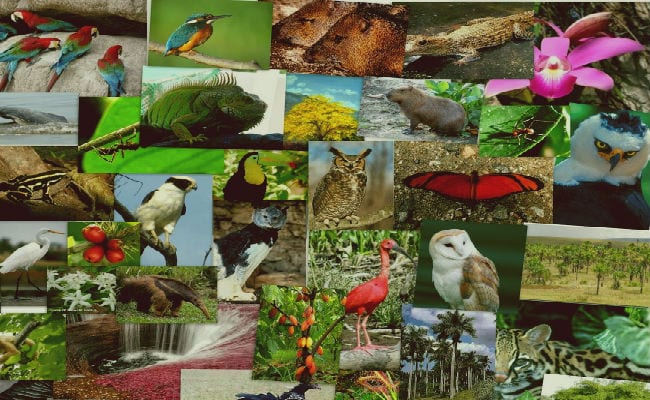The etymology of the word "biotic" refers unequivocally to the prefix of Greek origin "bio", which means "life", and it is under this simple fact that the meaning of this very atypical term is clarified. A "biotic factor" is, therefore, a factor referring to life, to what is alive, being so in ecology it refers to all types of organisms that develop in a given environment, that modify it and interact with other organisms or with the environment itself. There is a certain component of will, where these factors avoid simply being carried away by natural forces, and thus, although they do not possess intelligence in a human degree, they exert conscious influence on their environment.
We speak of course about "flora" and "fauna", plants, animals, and all similar creatures but with a little-known name for those who are not somewhat involved in the world of science, or who are simply curious. In this way, a forest and all its trees are biotic factors, the squirrels and the seeds and nuts they collect, birds of prey that lurk from above, the ornamental flowers, the fruits and even the bud and spore fungi that populate wet areas. Or, without going any further, our pets and their fleas, our food, ourselves, it seems a lot because it is a lot to take into account, but it is not everything.

Change's agents
These different living beings must seek their own survival, and through interaction with others of their species, reproduce, for which they have a great variety of physiological and behavioral characteristics that help them compete for those resources necessary for their subsistence.
Biotic factors can be understood as the agents of change within a system, the subjects whose actions start the environment, but what do they actuate? What resources do they use to survive? The answer would be the other element that according to ecology and biology makes up the environment: "abiotic" factors. The prefix "a" is added to the word to denote a quality of absence, or in other words, to denote that it does not belong to the biological, that it is alien to it. Thus, things like air, land, water, light and temperature set the stage where flora and fauna develop, a medium where life does not exist in itself, but which provides sustenance for it.
Classification
On the one hand, depending on their role in the cycle of organic / inorganic interactions in which life is summarized, biotic factors have three main subdivisions:
- Producers or Autotrophs: The first link in a complex chain, this type of factor is made up of those organisms that take inorganic matter and turn it into the food that they themselves consume. This implies that its interaction with other living beings is limited compared to other species as it does not depend on the direct consumption of other biotic factors. Plants naturally fall into this classification. Additionally, by taking advantage of elements that are often the waste of other beings (such as carbon dioxide from respiration and urea from urine), they contribute to the reuse of compounds, a practice that keeps the environment clean.
- Consumers or Heterotrophs: the hypothetical second link in the food chain. This factor is composed of those organisms whose capacities and aptitudes do not allow them to manufacture their own food, for which they obtain their nutrients through the direct consumption of other beings, either Producers or other Consumers. Animals are all ideal examples of this classification. Whether they are those that eat plants, carnivores that kill other animals, or scavengers that take advantage of various deaths, no animal is capable of producing all the necessary nutrients within its own body, for which they resort to the consumption of beings that in a certain way or another they have succeeded. This is why the human being, even if he "cultivates" vegetables and "raises" animals, is technically a consumer.
- Decomposers or Detritophages: Just as the Producers took advantage of the organic matter from the environment or from the excretions of other living beings to feed themselves, this third and last link in the chain (at least at a basic level) uses the organic matter found in tissues and decomposing compounds. , be these fallen leaves, corpses, shed skins or similar. Among the most common decomposers are earthworms and fungi.
This third type of biotic factor cUses a similar recycle and reuse function in principle to that of the Producers when taking charge of ensuring the correct progress of the vital process of the environment and its balance, but it does so at a deeper, complex and symbiotic level when at the same time it closes and restarts a cycle. The decomposed organic matter is transformed into substances that feed the Producers, and the process restarts.
Additionally, there are classifications given with respect to the number of organisms to be grouped: individual (a single unit), population (set of individuals from a given place) and community (interactive set of populations). On the other hand, biotic factors have a set of intersubjective relationships according to the type of interaction they carry out with each other, so that they exist: predation (a living being feeds directly on another, with death as a consequence), competition (when two species use the same resource), parasitism (when a living being takes advantage of another without offering any benefit in return) and mutualism (a relationship where both parties benefit from the interaction.

Biotic factors in human food
That said, there are perhaps unsuspected fields where biotic factors make an appearance. The Macrobiotic Diet, for example, is a type of diet extracted from ideas from oriental culture, and reorganized under modern ideas, here, the proportions and types of food ingested are handled with extreme care under the idea of creating an adequate balance of Chemical compounds in the body after these foods are digested, thus collaborating with the assimilation process, which helps prevent diseases by avoiding the fatigue suffered by the body when it has to process disproportionate amounts of food.
Additionally, a trend in the food industry and in the consumption patterns of various societies is the introduction of "probiotic" elements in the diet. They are simply various foods (usually sausages or dairy) to which special varieties of bacteria have been added that, when consumed, benefit the body in some way. A very common example would be the varieties of yogurt that improve the digestive process and the absorption of nutrients in the intestine.